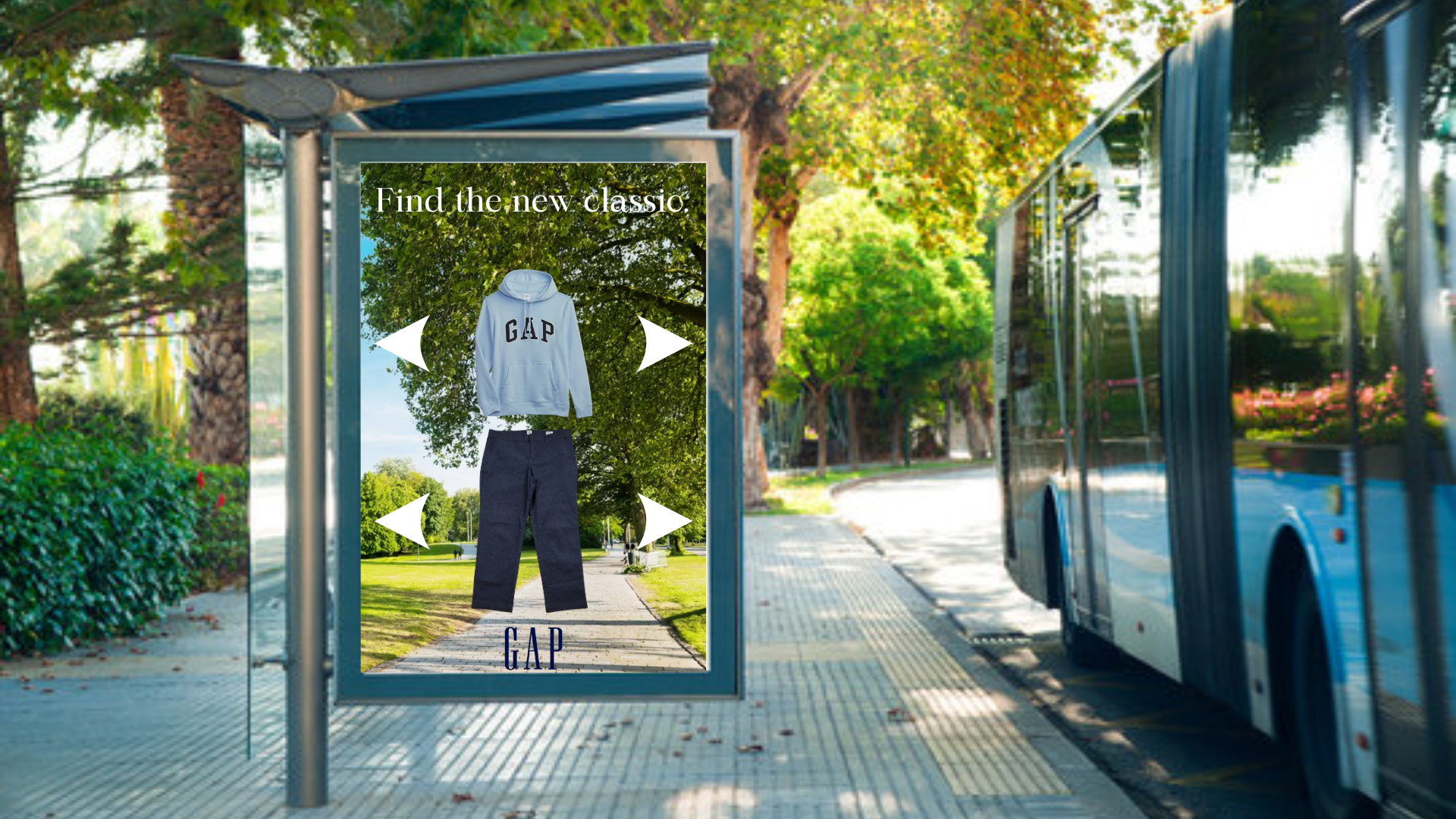Coming Back from a Gap
Spring 2024
For my major’s Capstone project, I was assigned a seemingly simple task: craft an advertising campaign which can solve an issue a company is currently facing. After a week of brainstorming, I determined Gap’s brand as being one in particular need of a marketing overhaul. Over the course of the third fiscal quarter of 2023, the most recent I had access to, the company saw net sales of $887 million, down 15% from the same quarter the year before. From drawing on both financial data and surveys related to Gap, I uncovered a brand in decline. Although a majority of the United States’ population is aware of it, most currently choose not to shop at it. The larger sector Gap falls under, family clothing stores, is one rampant with competition which is only projected to become more fierce in the coming years. Particularly with the new threat online fast-fashion retailers such as Shein impose on historically brick-and-mortar retailers like Gap, it cannot afford to fall farther than it already has. The brand must find a way to more effectively relate to its target audience to ensure its place as a relevant clothing retailer.
New Strategy
After amassing the necessary background information on Gap, I set about creating a strategy the brand can apply to its advertising efforts to better appeal to consumers. I first summarized its most pressing current issue before briefly outlining what I believe to be its target audience. I then posited what this group of people thinks about the brand currently. Although they might have memories of visiting the retailer when they were younger, it doesn’t do anything to notably differentiate it from other clothing brands presently and as a result of this gives them no reason to shop at it. Gap should work to reverse this image through imploring younger generations to see them as a brand which has their fashion needs in mind. I outlined a variety of ways in which Gap has proven itself as able to fulfill this duty in the past including its comfort towards company-wide shifts, its offering of looks unbound by trends, and its affordable prices.
Gap offers sophisticated looks which don’t substitute excitement for professionalism.
The Adaptive Stylist
The target audience I believe Gap should pursue is one which has historically been the driving force behind what it means to be a fashionable young professional. Their desire for timeless yet chic clothing cultivates an elevated style which perfectly conveys the stability they want to be perceived as embodying. They follow current trends broadly but retain their distance out of fear of taking too large of a risk in doing so. Brands such as Gap which offer reliable styles are a perfect fit for them as long as they make an effort to connect with them on a personal level. As Millennials/Gen Z cusps, these individuals operate in a social landscape which values authenticity above all else. If a brand appears to be out-of-touch to their needs as Gap has, they will be in many cases unwilling to pivot towards them.
Creative Materials
This Instagram campaign would take advantage of the app’s newly-introduced “Close Friends”-only feature for its posts, which allows users to create content only those they put on their “Close Friends” list can see. An automated service would add around 3% of Gap’s total follower count to this list each day and a single-image post of a unique look featuring Gap-branded clothing would be shared with these accounts. The list would be reset at the start of each new day, all users removed from it and another 3% added at random to see another post. The post included above is a mock-up of what one of these posts would look like.
A series of ~30 second ads would be created sharing the sentiment of the video mocked above. They would be GRWM, or “Get Ready With Me”, vlogs which would each feature a TikTok influencer in the fashion or lifestyle sphere who has a notable follower-count of users in the same demographics as Gap’s target. In the videos, they would greet the camera before going over what their days entail. They would then show footage of them putting on each individual piece they plan on wearing, noting the official name of each and explaining that every item can be purchased from Gap.
Ads like this would be implemented at bus shelters in major cities across the United States which feature digital touch-screens on their exteriors. I chose bus stops in particular as the best medium to show these advertisements through due to the fact that the target audience of Gap likely uses these on a daily basis to commute to and from work. They would include the copy “Find tomorrow’s fit” at their top and the Gap logo at the bottom. In between these two would be a carousel of around thirty tops and bottoms which could be cycled through by the arrows at their sides. The background of the ad would feature camera footage of the front of it, allowing any person standing in front of it to line up with the clothes featured on it and appear to be dressed in them.



